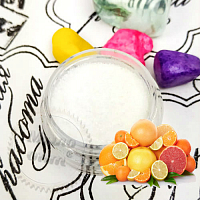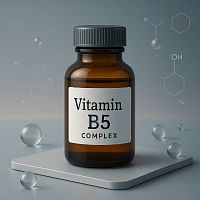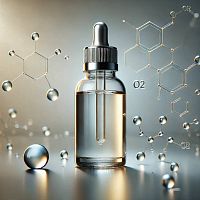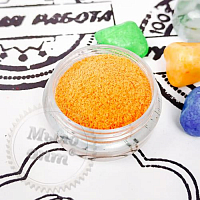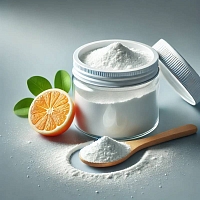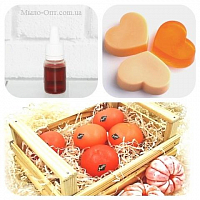-
 Absolutes
Absolutes
-
 Active Complexes
Active Complexes
-
 Actives and Peptides for Cosmetics
Actives and Peptides for Cosmetics
-
 Amino Acids
Amino Acids
-
 Food Flavorings
Food Flavorings
-
 Ayurveda
Ayurveda
-
 Vitamins
Vitamins
-
 Gelling Agents and Thickeners
Gelling Agents and Thickeners
-
 Hydrosols and Floral Waters
Hydrosols and Floral Waters
-
 Hydrolyzed Proteins
Hydrolyzed Proteins
-
 Fragrant and aromatic substances
Fragrant and aromatic substances
-
 Acids, Salts, Alcohols, and Alkalis
Acids, Salts, Alcohols, and Alkalis
-
 Preservatives and Antioxidants
Preservatives and Antioxidants
-
 Cosmetic Raw Materials
Cosmetic Raw Materials
-
 Dyes, Pearlescents, and Glitters
Dyes, Pearlescents, and Glitters
-
 Face Masks, Scrubs, and Dried Flowers
Face Masks, Scrubs, and Dried Flowers
-
 Oils, batters, macerates, oil mixtures
Oils, batters, macerates, oil mixtures
-
 Candle Supplies
Candle Supplies
-
 Melt and Pour Soap Bases
Melt and Pour Soap Bases
-
 Base for cosmetics, cream, serum, shampoo
Base for cosmetics, cream, serum, shampoo
-
 Fragrance Oils
Fragrance Oils
-
 Surfactants
Surfactants
-
 Peelings for Skin
Peelings for Skin
-
 Herbal Powders and Plant
Herbal Powders and Plant
-
 Silicones and Conditioning Surfactants for Hair
Silicones and Conditioning Surfactants for Hair
-
 Raw materials for dietary supplements
Raw materials for dietary supplements
-
 Packaging for Cosmetics and Perfumes
Packaging for Cosmetics and Perfumes
-
 Molds, Packaging, Tools
Molds, Packaging, Tools
-
 Organic Extracts
Organic Extracts
-
 Emollients for Cosmetics
Emollients for Cosmetics
-
 Emulsifiers
Emulsifiers
-
 Essential Oils
Essential Oils
L-Ascorbic Acid (Stable Vitamin C): Your Essential Ingredient for Radiant Skin
Unleash the power of radiant skin with L-Ascorbic Acid (Stable Vitamin C), a premium cosmetic ingredient sourced from France. This high-quality, stable form of Vitamin C, identified by its INCI name Ascorbyl Glucoside, is a white, odorless powder designed to elevate your cosmetic formulations. With excellent solubility in water and glycerin, and a recommended usage rate of 1-4%, it's the perfect choice for creating effective and stable skincare products.
Description and Characteristics
L-Ascorbic Acid (Stable Vitamin C), or Ascorbyl Glucoside, is a sophisticated derivative of Vitamin C known for its exceptional stability compared to pure L-Ascorbic Acid. This stability ensures that the active benefits of Vitamin C are delivered effectively to the skin without rapid degradation. As a white, odorless powder, it integrates seamlessly into various cosmetic formulations without altering the product's color or scent. Its pH range of 2.0-2.5 is conducive to optimal skin penetration and efficacy. The solubility in water and glycerin makes it highly versatile for use in a wide range of water-based and emulsion-based products.
Application Variants and Areas of Use in Cosmetics
Ascorbyl Glucoside is a powerhouse ingredient with diverse applications across numerous cosmetic categories, offering significant benefits for skin health and appearance:
- Anti-Aging Formulations:
- Serums and Creams: Highly effective in reducing the appearance of fine lines and wrinkles by promoting collagen synthesis, leading to firmer, more youthful-looking skin. It's a cornerstone for anti-aging serums, day creams, and night treatments.
- Eye Creams: Targets delicate under-eye skin to minimize the appearance of dark circles and puffiness, providing a brighter, more refreshed look.
- Brightening and Hyperpigmentation Treatments:
- Spot Treatments and Toners: Helps to fade hyperpigmentation, including sun spots, age spots, and post-inflammatory hyperpigmentation (PIH), by inhibiting melanin production. This leads to a more even skin tone and enhanced radiance.
- Masks: Incorporate into brightening face masks to deliver a concentrated dose of Vitamin C, instantly revitalizing dull skin.
- Antioxidant Protection:
- Daily Moisturizers and Sunscreens: As a potent antioxidant, it neutralizes free radicals generated by UV radiation and environmental pollutants, thereby protecting skin cells from oxidative damage. This makes it an ideal addition to daily protective skincare.
- After-Sun Products: Helps to soothe and repair skin after sun exposure by mitigating oxidative stress.
- Acne-Prone Skin Care:
- Cleansers and Gels: Its anti-inflammatory properties can help reduce redness and inflammation associated with acne, while its ability to improve skin texture can minimize the appearance of post-acne marks.
- General Skin Health and Radiance:
- Facial Mists and Essences: Provides a refreshing boost of antioxidants and helps to improve overall skin vitality, giving the skin a healthy, luminous glow.
- Body Lotions and Serums: Extends the benefits of Vitamin C to the entire body, addressing uneven skin tone and improving the firmness and smoothness of body skin.
The stability of Ascorbyl Glucoside ensures that its benefits are sustained throughout the product's shelf life, providing consistent efficacy for consumers. Its ease of incorporation makes it suitable for both large-scale manufacturers and artisanal cosmetic creators.
Cosmetic Recipe: "Radiant Glow" Vitamin C Serum
Create your own potent "Radiant Glow" Vitamin C serum, designed to brighten, even skin tone, and protect against environmental damage.
| Ingredient | Percentage | Function |
|---|---|---|
| Phase A (Aqueous) | ||
| Distilled Water | Up to 100% | Base for the serum |
| Glycerin | 3-5% | Humectant, moisturizes skin |
| L-Ascorbic Acid (Ascorbyl Glucoside) | 2-4% | Stable Vitamin C, antioxidant, brightener |
| Phase B (Active) | ||
| Ferulic Acid (optional) | 0.5% | Antioxidant booster, stabilizes Vitamin C |
| Hyaluronic Acid (low molecular weight) | 0.5-1% | Intense hydration, plumps skin |
| Phase C (Preservation) | ||
| Broad-spectrum Preservative (e.g., Liquid Germall Plus) | 0.5-1% | Prevents microbial growth |
Preparation Instructions:
- Sanitization: Thoroughly clean and sanitize all equipment, containers, and work surfaces.
- Phase A: In a beaker, combine distilled water and glycerin. Stir well to dissolve the glycerin.
- Incorporate Vitamin C: Gradually add L-Ascorbic Acid (Ascorbyl Glucoside) to Phase A. Stir continuously until it is completely dissolved. This may take a few minutes as Ascorbyl Glucoside dissolves well but can take time.
- Phase B: If using, dissolve Ferulic Acid in a small amount of warm water (if needed, it's slightly soluble). Add to the main mixture. Then, slowly sprinkle the Hyaluronic Acid powder into the mixture, stirring constantly until it is fully hydrated and forms a gel-like consistency.
- Phase C: Once all ingredients from Phases A and B are fully incorporated and the mixture has cooled to room temperature (if any heating was involved for faster dissolution), add your chosen broad-spectrum preservative. Stir thoroughly to ensure even distribution.
- pH Adjustment (if needed): Check the pH of the serum. The ideal pH for Vitamin C serums is typically between 3.0 and 3.5 for optimal stability and skin absorption. If necessary, adjust the pH using a few drops of a 10% Lactic Acid solution (to lower pH) or a 10% Sodium Bicarbonate solution (to raise pH), adding drop by drop and checking the pH after each addition.
- Packaging: Transfer the finished serum into an opaque or amber glass bottle with a dropper to protect it from light and air.
Application Recommendations:
- Dosage: The recommended usage rate for L-Ascorbic Acid (Ascorbyl Glucoside) is typically 1-4% in cosmetic formulations. For a serum, 2-4% is often effective. Always start with a lower concentration for new formulations and adjust as needed.
- Integration: Add Ascorbyl Glucoside to the water phase of your formulation. Ensure it is fully dissolved before proceeding with other ingredients.
- pH Stability: While Ascorbyl Glucoside is stable, maintaining a pH range of 3.0-6.0 in the final product is generally recommended for optimal efficacy and skin compatibility.
- Storage: Store L-Ascorbic Acid (Ascorbyl Glucoside) in its original packaging, in a cool, dry, dark place, away from direct sunlight and heat. The finished cosmetic product should also be stored in opaque, air-tight containers to preserve the integrity of the Vitamin C.
- Patch Test: Always perform a patch test on a small area of skin before full application, especially if you have sensitive skin, to check for any adverse reactions.
- Sun Protection: When using products containing Vitamin C, it is crucial to apply a broad-spectrum sunscreen daily, as Vitamin C can make skin more sensitive to the sun.
- Shelf Life: While stable, freshly made Vitamin C serums are generally best used within 3-6 months. Observe for any changes in color or smell, which could indicate degradation.
This recipe provides a foundation for a powerful Vitamin C serum. Feel free to customize it with other beneficial ingredients like niacinamide or ceramides to create unique and effective skincare solutions.
And also go to the Blog from Мыло Опт, where we share useful information about creating the right natural cosmetics
| INCI | Ascorbyl Glucoside | |
| pH | 2.0-2.5 | |
| Other | ||
| Color product | white | |
| Descriptio smell | Without smell | |
| Features | All information presented on the site is for reference only | |
| Input percentage | 1-4% | |
| Minimum count | 1 | |
| Name | L-ascorbic acid (stable vitamin C), 100 g | |
| Packaging | container for transportation | |
| Packing | 100 grams | |
| Solubility | in water, glycerin | |
| Type | vitamins | |
| View | powder | |
| Valid until | 10.2026 | |
-
Date:todayAuthor:Юля, АлчевськReviews
Шукав(ла) гідролат лаванди. Знайшов(ла) потрібний саме в Міло-опт. Якість відмінна, ціна доступна.
Date:todayAuthor:Марина , ОдессаReviewsКачество красителей из США не может не радовать. Заказываю компоненты для моей косметики только тут
/bitrix/templates/dresscodePHP code/images/picLoad.gif">
Fill in the details for the price requestmovierulz,sx mumuporn.mobi ladies bathroom images كس مولع freearabicporn.com نيك ازواج malu sexy video pakistanixxx.org priyanka chopra topless pics ahemaru hentai hentaihooked.com overwatxh hentai indian hidden camera xvideos ruperttube.net indensex probinsyano may 30 2022 full episode teleseryestvheaven.com probinsyano july 7 2021 dizzy hentai hentaiweb.net 300 yen no otsuki ai xixe girl alfaporn.mobi desi sex vedios com افلام عربي ساخنه roughtube.org تعذيب البنات بالجنس hindi masala sex video tubepornfilm.mobi mujra telugu aunty sex videos sikwap.mobi desi nepali sex نيك محارم اب وبنته arab-porn.net كس بلبن xxsaks tubebox.mobi literrotica www.sarkari result. pornnporn.com plus kannada movie sexy video rekha bigtitsporntrends.com radhika apte porn video









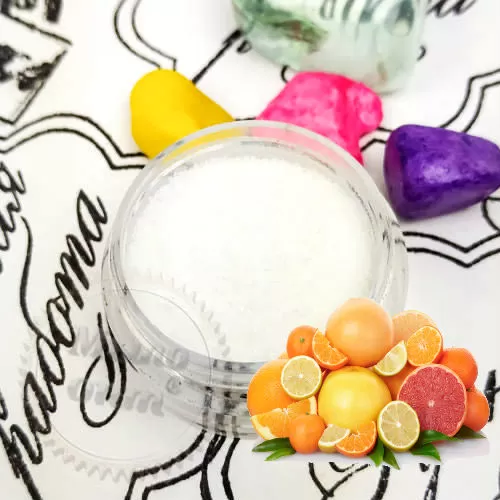
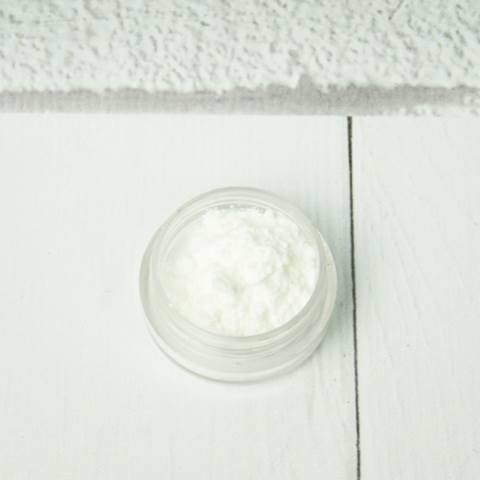
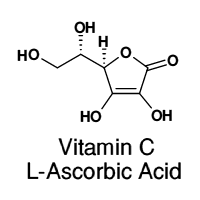

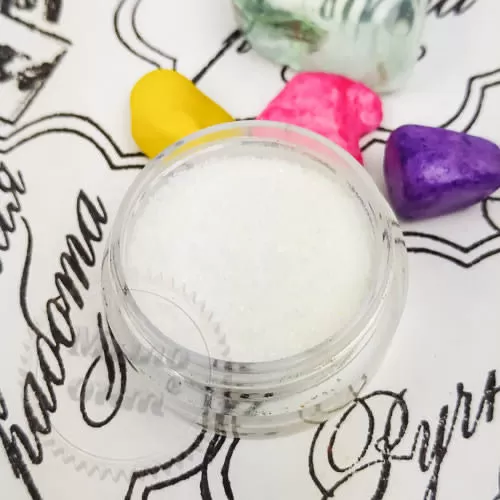





 Add to cart
Add to cart Buy in 1 click
Buy in 1 click

 Add a review
Add a review To favorites
To favorites To compare
To compare



